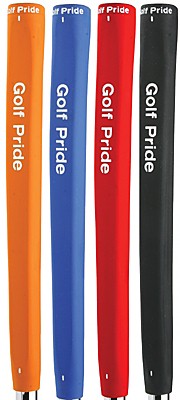At the Open Championship at St. Andrews two years ago, Tiger Woods dropped a bombshell by ditching his Scotty Cameron putter for a Nike Method putter. His reasoning? The Method putter got the ball rolling more quickly on the slow, burly greens of St. Andrews.
This year, much has been made of the rough at Royal Lytham & St. Annes, but slow greens are also a factor after a week of downpours, prompting the New York Times to remark, “Woods has often had trouble with the pace of his putts on slow greens, most recently at the Greenbrier Classic in West Virginia. It could be something to watch in the early rounds.”
Woods, however, doesn’t sound worried. “They are slower,” he said. “But I haven’t done anything to change my mechanics. I normally add lead tape to my putter when the greens are slow, but I have a good feel for the greens and the pace, so I haven’t done that this week.”
We’ll use this bit of news as an excuse to delve into one of our favorite topics here at PutterZone.com: putter fitting. Woods is far from alone in tweaking his putter to fit his playing conditions. In fact, several putter companies have taken note of this phenomenon on tour, endeavoring to bring similar options to the broad market with interchangeable faces, adjustable head weights and other quick fixes for matching one’s playing conditions.
The average golfer, however, isn’t jetting around from one country or climate to another. Most of us stay close to home, playing the same courses around our hometowns, with the occasional golf getaway. Unless you are an elite or traveling golfer, you probably don’t need to worry about micro-matching your putter to changing conditions.
But that doesn’t mean you should ignore your typical playing conditions. Indeed, putter loft is a major factor achieving the right fit for better results on the green, and it has a direct relationship to your playing conditions. If you play in dry conditions with hard, fast greens, you typically want a lower loft. If you play on slower greens, however, you may need higher loft to get the ball rolling well. So keep a close eye on the roll of your ball. If you see a pattern of bouncing or skidding, you may need to adjust the loft to better fit your playing conditions.
Another factor is putter weight. Some experts say that a lighter-weight putter is a better fit for slower greens. Yet as noted above, Tiger Woods typically adds weight (via lead tape) to his putter when playing on slow greens. There is no one-weight-fits-all solution for a given golfer or green condition. But it’s necessary to know that head weight is a crucial fitting factor, and that finding the right weight for you and your conditions will go a long way toward establishing good touch and distance control.
P.S. For a complete crash course in putter fitting, check out Putter Perfection, PutterZone.com’s putter fitting guide.
 PutterZone – Best Putter Reviews
PutterZone – Best Putter Reviews



